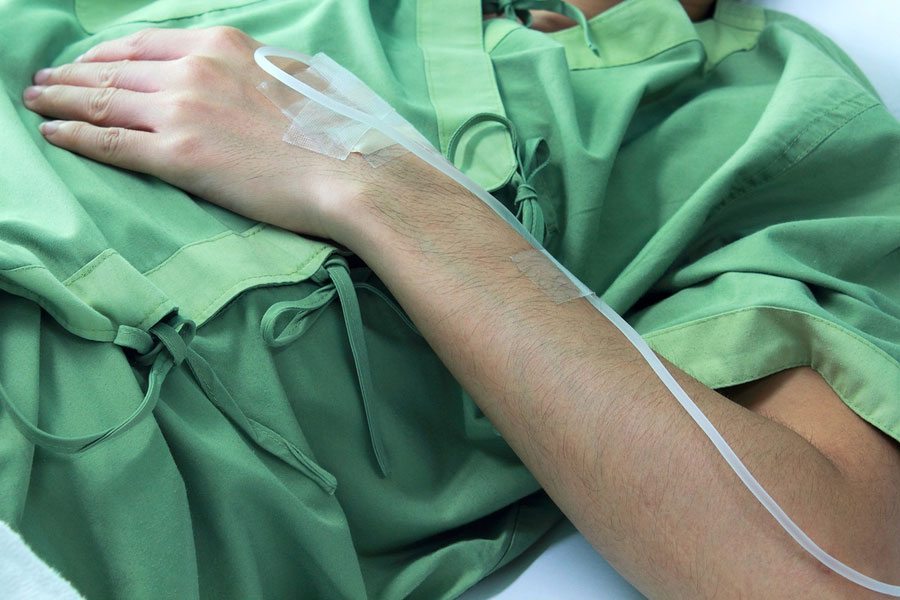Inferior Vena Cava (IVC) Filters
IVC filters help prevent blood clots from causing blockages near the lungs and heart. However, if left in place long-term, IVC filters can cause serious health complications such as internal bleeding and cardiovascular complications.
What are IVC Filters?
Frequently used in patients with a high risk of developing blood clots, an IVC filter decreases the possibility of blood clots traveling through the body’s veins and blocking major organs. Roughly 200,000 devices are implanted in patients every year, and that number continues to grow.
Before IVC filters were produced, one of the only methods to treat blood clots was through taking blood thinning medications. However, some individuals are unable to take blood thinners, like those with atrial fibrillation, causing a high demand for an alternative solution. Today, a number of large manufacturers have lines of IVC filters available with even more in design and production.
Treatment with an IVC filter is beneficial to those more prone to developing blood clots in the legs. Some of these patients include:
- Trauma victims
- Immobile patients
- Recent surgery patients
- New mothers who just delivered a baby
How do IVC Filters work?
IVC filters are small, spider-shaped devices that are placed in the inferior vena cava – the large vein that moves blood to the heart. Typically, the filter is placed right below the kidneys.
Before inserting an IVC filter, a local anesthetic is used to numb the site.The procedure itself involves a small incision to insert the catheter through the groin or neck. An X-ray is then used to guide the filter into place. The procedure is minimally invasive and only requires a small bandage over the insertion site.
Once implanted, the IVC filter entraps any blood clots that break loose from deep veins within the body. Without the device, blood clots could potentially lodge themselves in veins, blocking blood flow to vital organs such as the heart and lungs.
IVC Filter side effects
 Although designed to prevent life-threatening blood clots, IVC filters have been linked to various long-term side effects. Some factors that can increase the likelihood of a harmful side effect include:
Although designed to prevent life-threatening blood clots, IVC filters have been linked to various long-term side effects. Some factors that can increase the likelihood of a harmful side effect include:
Device Complications
- Device migration
- Filter embolization
- Filter fracture
- Insertion-site thrombosis
- Perforation of large veins
- Recurrent DVT
- Recurrent PE
- Thrombotic complications
- Vena cava thrombosis
Health Consequences
- Hemorrhaging
- Stroke
- Cardiac tamponade (caused by excess fluid surrounding the heart)
- Hole in the heart or lungs
- Death
The Effects of IVC Filters on Children
Although implanting an IVC filter in pediatric patients is technically feasible, the device’s safety in children has yet to be established. However, as more children overcome various medical and surgical procedures, the likelihood of using a retrievable IVC filter is increasing.
Sometimes occurring in children who have an IV inserted due to a serious medical condition, deep vein thrombosis (DVT) causes blood clots to form in lower parts of the body. While still an uncommon event for children, other DVT factors may include:
- Infection
- Surgery
- Trauma
- Cancer
- Lupus
- Heart disease
Currently, there are no IVC filters on the market designed specifically to treat blood clots in children.
Who is at Risk?
 Retrievable IVC filters are designed to be removed once blood clot risks have passed. Unfortunately, these devices are sometimes implanted in patients much longer than medically necessary, leading to possible health complications.
Retrievable IVC filters are designed to be removed once blood clot risks have passed. Unfortunately, these devices are sometimes implanted in patients much longer than medically necessary, leading to possible health complications.
Individuals should follow up with their physician to discuss the device removal timeframe. Once the clinical risk of pulmonary embolism has subsided, patients should then be scheduled for a procedure to remove the device.
Evidence of IVC Filter Complications
 In 2010 and again in 2014, the FDA issued a safety communication message to healthcare providers and consumers about the potential damaging risks associated with retrievable IVC filters. The organization stressed the importance of removing the devices as soon as they are no longer medically required.
In 2010 and again in 2014, the FDA issued a safety communication message to healthcare providers and consumers about the potential damaging risks associated with retrievable IVC filters. The organization stressed the importance of removing the devices as soon as they are no longer medically required.
In addition, the JAMA Internal Medicine journal conducted its own study around the effectiveness of IVC filters. At the conclusion of the study, they found less than 10 percent of patients had a successful removal of the device, while 8 percent would develop PE. Other concerns surrounding the filters’ safety and effectiveness included:
- Filter fractures in which device fragments can get trapped in the heart or lungs.
- Defective filters that can become imbedded in a patient’s internal organs, potentially leading to surgery.
- Increased risk of blood clots forming in the legs, known as deep vein thrombosis.
- Filter migration, involving the device moving around and possibly getting stuck in an ineffective position.
Drug Reactions with IVC Filters
IVC filter patients may be prescribed blood thinners to help further decrease the likelihood of blood clots forming. Before a device is implanted, individuals should talk with their doctor about any additional medications they are on, as well as other health conditions.
Resources for IVC Filter Side Effects
Complaints have recently piled up against IVC filter manufacturers due to serious long-term side effects associated with many retrievable filters currently on the market.
Last Edited: October 31, 2017